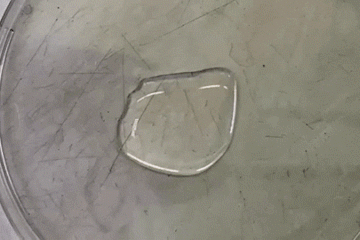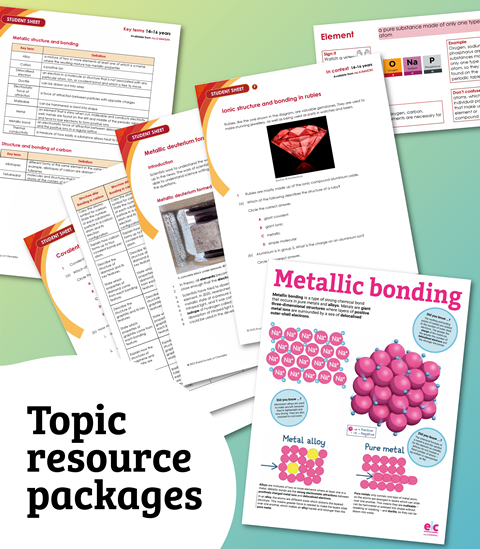All Rates of reaction articles – Page 2
-
 Ideas
IdeasUse on-screen simulations to successfully boost data skills
Perfect for remote teaching, but they’ve a role in classroom settings too
-

-
 Magnificent molecules
Magnificent moleculesHydrochloric acid
The science behind one of the most commonly used laboratory acids
-
 Ideas
IdeasGif me your best teaching ideas
Making videos of microscale experiments is easy and draws students’ attention to key concepts
-
 Magnificent molecules
Magnificent moleculesEthanoic acid
Hayley Bennett reveals the science behind everyone’s favourite household acid
-

-
 Exhibition chemistry
Exhibition chemistryThe glow stick reaction
Light up the classroom with this simple, safe and value-for-money demonstration of chemiluminescence
-
 Resource
ResourceKinetics 16–18
Test your students’ grasp of advanced kinetic principles such as the rate determining step, the rate equation and the Arrhenius equation using these Starter for ten questions.
-

-
 Exhibition chemistry
Exhibition chemistryThe genie in the bottle
Demonstrating the catalytic decomposition of hydrogen peroxide
-
 Resource
ResourcePresenting data: Non-linear graphs
Try these activities to identify your students’ mathematical misconceptions when presenting chemistry data. Use them in your teaching to help students interpret their practical observations using non-linear graphs.
-
 Class experiment
Class experimentThe effect of temperature on reaction rate
Discover more about collision theory in this practical, where a sodium thiosulfate and hydrochloric acid mixture produce an interesting reaction. Includes kit list and safety instructions.
-
 Class experiment
Class experimentThe effect of concentration and temperature on reaction rate
Reaction rate can be altered by many things, in this practical students explore how temperature and concentration effect reaction in an closer look at kinetics. Includes kit list and safety instructions.
-
 Class experiment
Class experimentBurning milk powder
Gather a Bunsen burner, and some common powdered milk to help students grasp the ideas of surface area and reaction rates. Includes kit list and safety instructions.
-
 Class experiment
Class experimentA visible activated complex
A simple demonstration of catalysis also introducing the idea of an activated complex and to allow discussion of the mechanism of catalysis. Includes kit list and safety instructions.
-
 Class experiment
Class experimentHydrogen peroxide decomposition using different catalysts
Collect a range of catalysts to explore the decomposition of hydrogen peroxide, paying close attention to the varied reaction rates. Includes kit list and safety instructions.
-
 Class experiment
Class experimentThe effect of concentration on reaction rate
Students react sodium thiosulfate solution is reacted with acid – a sulfur precipitate forms. The time taken for a certain amount of sulfur to form can be used to indicate the rate of the reaction. Contains kit list and safety instructions.
-
 Resource
ResourceChallenging Plants: Fertilisers - Practicals
Nutrients essential for plant growth are obtained naturally from soil or other growing media. However, supplies become depleted and fertilisers are needed to increase the availability of nutrients to plants. An understanding of chemical changes is used to making fertilisers, often designed to meet specific requirements such as particular nutrient ...
-

-
 News
NewsRating rate laws
How to help students gain a deeper understanding of mathematical model-building











